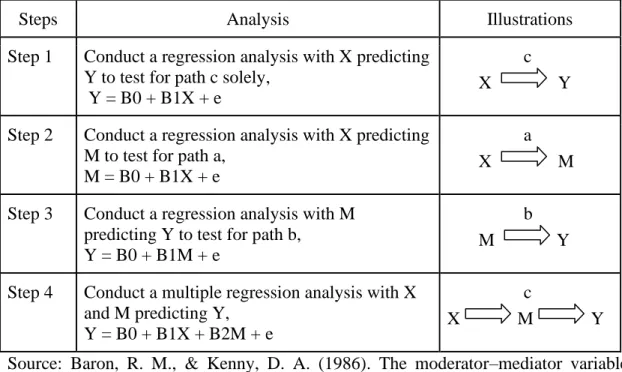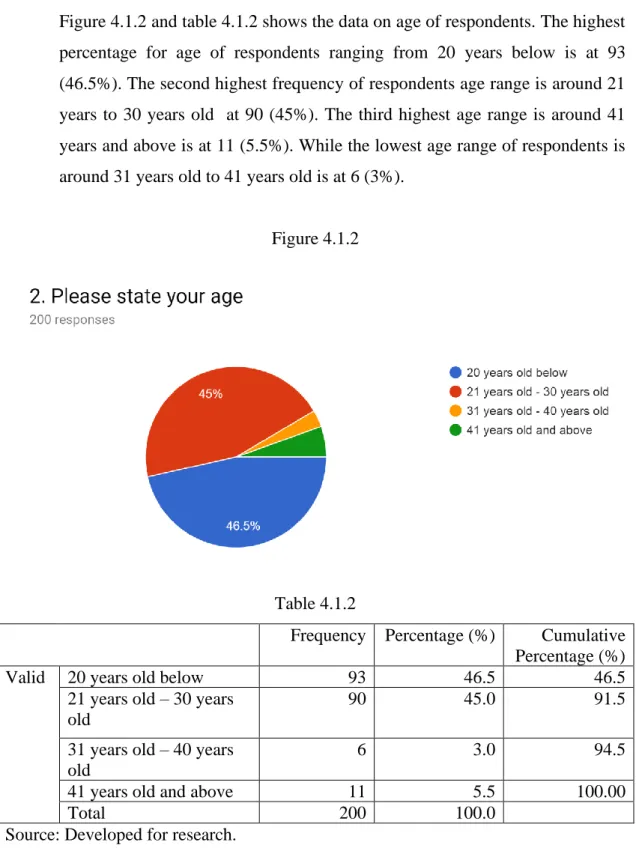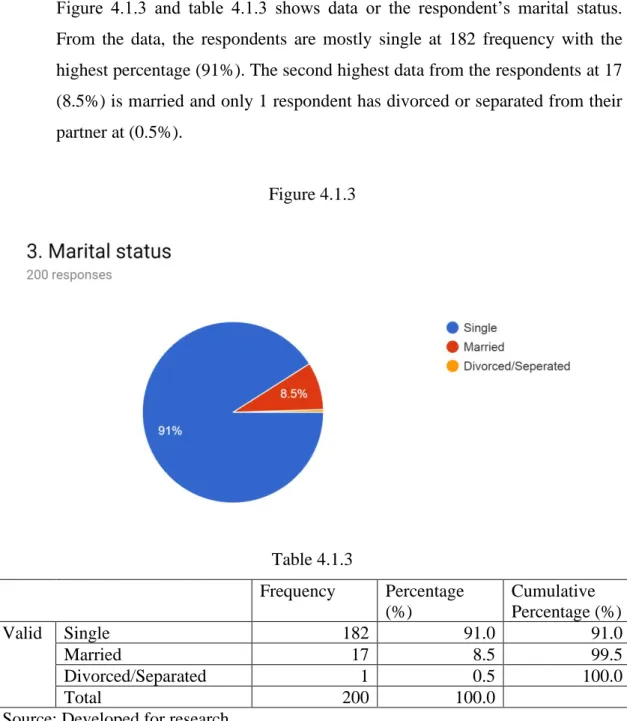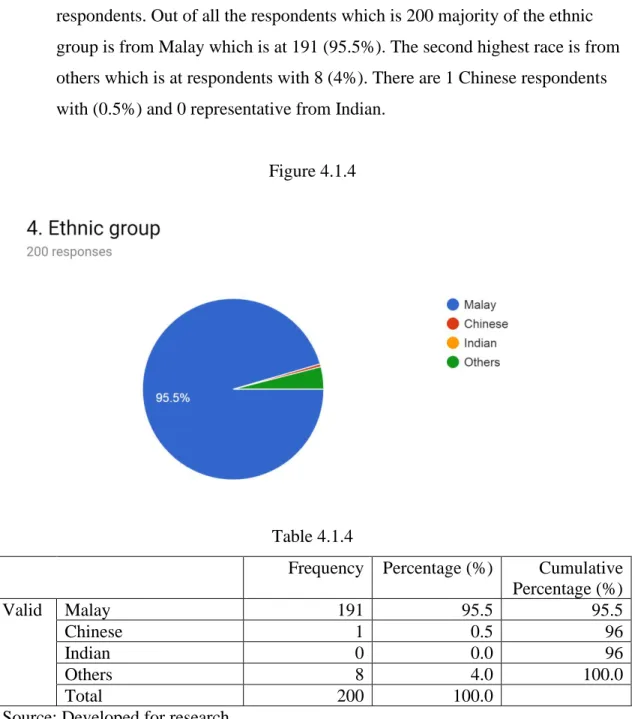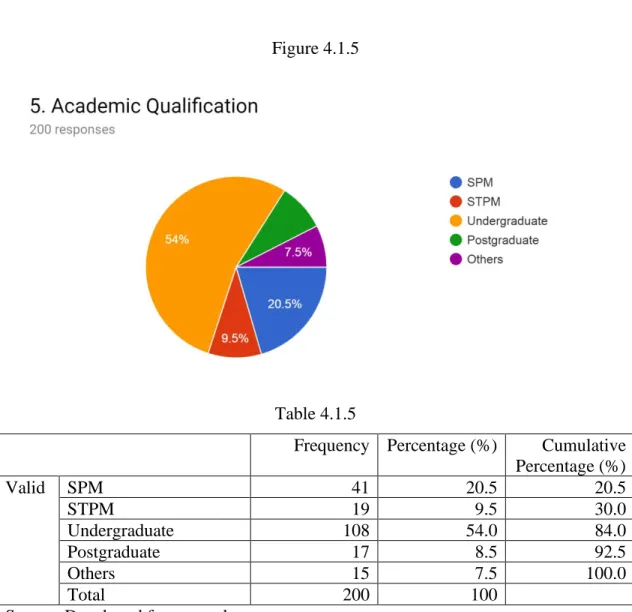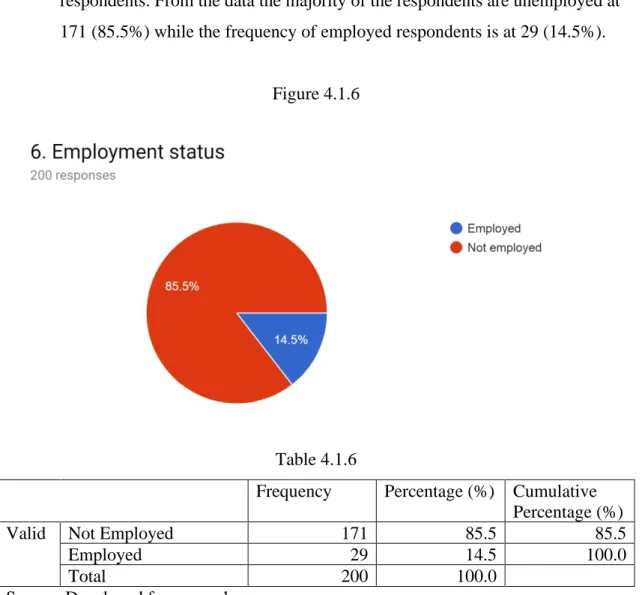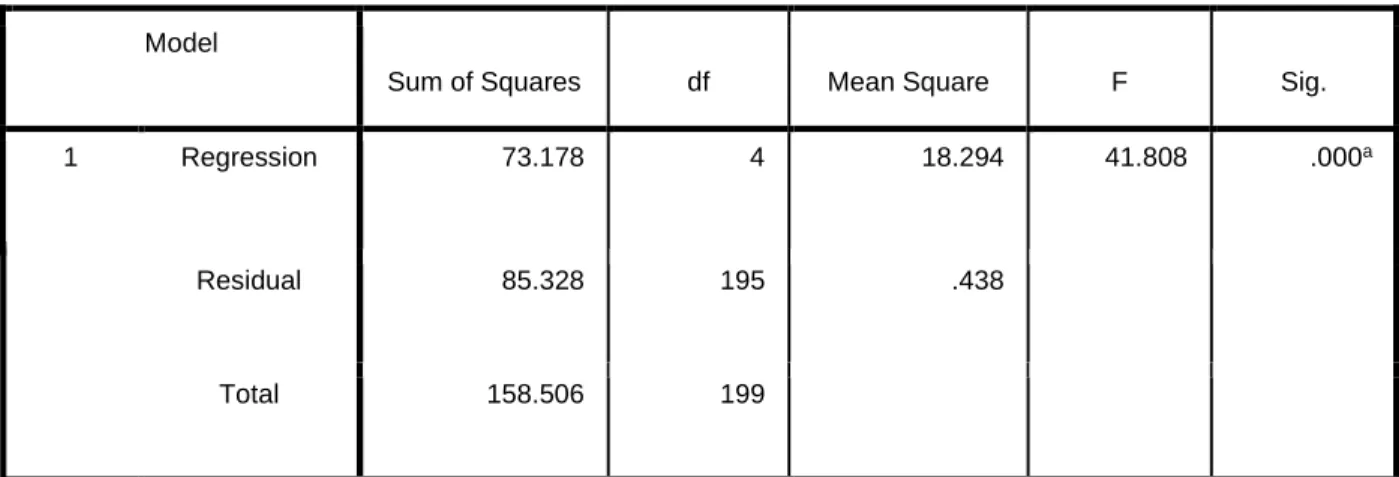The purpose of this research is to investigate the influence of attitude, Halal awareness, Islamic Brand and product knowledge on purchase intentions towards imported Halal food among Muslim consumers in Malaysia. The primary purpose of this research is to determine the factors that influence the purchase intention of Malaysian Muslims in purchasing imported halal food. This research is to investigate the relationship between attitude, Halal awareness, knowledge of Islamic brands and behavioral intentions towards imported Halal food among Malaysian Muslims.
RESEARCH OVERVIEW
- Research Background
- Research Problem ................................................................................... 3-5
- Chapters Layout
- Conclusion
H0: There is no significant relationship between Halal awareness and purchase intention towards imported Halal food among Muslim consumers in Malaysia. H1: There is no significant mediating effect of attitude on the relationship between Halal awareness and purchase intention towards imported Halal food among Muslim consumers in Malaysia. H1: There is no significant mediating effect of attitude on the relationship between Islamic branding and purchase intention towards imported Halal food among Muslim consumers in Malaysia.
LITERATURE REVIEW
Review of Literature
- Background of Industry ....................................................... 16-17
- Halal Awareness
- Islamic Brand ........................................................................ 22-23
H1: There is a significant relationship between attitude and purchase intention towards imported halal food among Muslim consumers in Malaysia. Therefore, there is a positive relationship between attitude and purchase intention towards imported halal food among Muslim consumers in Malaysia. H2: There is a significant relationship between halal awareness and purchase intention of imported halal food among Muslim consumers in Malaysia.
H3: There is a significant relationship between Islamic brand and purchase intention for imported halal food among Muslim consumers in Malaysia. There is a significant relationship between product knowledge and purchase intention for imported halal food among Muslim consumers in Malaysia. There is a significant relationship between product knowledge and purchase intention for imported halal food among Muslim consumers in Malaysia.
H1 : There is a significant relationship between attitude and purchase intention towards imported halal food among Muslim consumers in Malaysia. H2 :There is a significant relationship between halal awareness and purchase intention towards imported halal food among Muslim consumers in Malaysia. H3 : There is a significant relationship between Islamic brand and purchase intention with imported halal food among Muslim consumers in Malaysia.
H4 : There is a significant relationship between product knowledge and purchase intention in relation to imported halal food among Muslim consumers in Malaysia.
Hypotheses Development ................................................................... 26-31
RESEARCH METHODOLOGY
Research Design
In research design, it will be based on the overall strategy or framework chosen by the researcher. It will help in the research project to ensure that the research progresses effectively. In this research, Causal Research will be used to obtain the information for the study.
According to John Dudovskiy (2016), the purpose of Causal Research is to analyze situations and generate explanations regarding the pattern between independent variables and dependent variables.
Data Collection Method
- Primary Data ........................................................................ 35-36
- Target Population
- Sampling Frame
- Sampling Technique
- Sample Size
In conducting this research, the primary data questionnaire will be chosen for gathering information against the target groups. Secondary data can be defined by information that had been published in literature in the form of newspapers, journals and books. Apart from that, secondary data can also be obtained by previous research and studies that had been conducted before.
Moreover, secondary data is also known as a flexible approach that can be used in many ways. A target population is defined as a group of people who have information that can be useful for research. In this research, the target population that will be suitable as respondents are Malaysian Muslims.
A total of 200 questionnaires will be distributed to Malaysian Muslims to obtain information on the subject of the study. According to Zikmund et al. 2013), the sampling frame can be defined as a labor force equipped with admissible components that can be used as a sample. However, in this study, a non-probability method will be used in the study, therefore a sampling frame is not required.
Since this research will use the non-probability method, some sampling techniques can be used.
Research Instrument
- Questionnaire Design
Construct Measurement
- Measurement Scale
- Origin of Construct ............................................................... 21-43
The questionnaires used in this study are adapted from Golnaz et al. (2009) and Ruslan et al. (2018). I will always look for the halal logo on the packaging before buying imported food products. The government must exercise strict control over the importation of imported food products into the local market.
Muslim consumers have the right to report any falsification of the halal logo used by manufacturers or producers. When determining halal status, the method of packaging and processing in the food supply chain is also important. It is very important for consumers to know the ingredients used in imported food products.
It is also useful to ensure that respondents are able to clearly understand the questions. Having the results from the pilot test, the research will have a clear idea whether the questionnaire is usable or not. Cronbach's Alpha was used for the research to determine the reliability of the pilot test.
According to Malhotra (2007), the variables are reliable when the Cronbach's Alpha value is more than 0.6 for each of the variables.
Data Processing
- Data Checking
- Data Editing
- Data Coding
- Data Transcribing
Data coding is when variables are converted to numbers so that the data can be keyed into software programs such as SPSS (Lewis, Bryman, & Liao, 2004). For example, the respondent's residence may be assigned as '1' for urban and '2' for rural. Along with this, the obtained data provided by the respondents will be converted into numerical form by replacing strongly disagree as 1, disagree as 2, neutral as 3, agree as 4 and strongly agree as 5.
With this method, the respondents will express themselves more easily, and the researcher will understand more easily. For the final step of data processing, the researcher will transcribe all the coded data of the questionnaires into the software (Malhotra & Peterson, 2006). The software will then run the data and proceed to analyze the coded data using SPSS version 18 software.
Data Analysis
- Descriptive Analysis
- Scale Measurement
- Reliability Test
- Inferential Analysis
- Pearson Correlation Coefficient Analysis
- Multiple Linear Regression Analysis
- Sobel Test................................................................ 51-52
For clarification, the rule of thumb for the interpretation of Cronbach's alpha is shown in Table 3.8.2.1. Understand Cronbach's alpha. The coefficient correlation analysis from Pearson, the international journal of medical education, will be used to measure the strength, significance, and direction between variables. In addition, the significance test between predictor and dependent variable can be examined by p-value.
The criteria are provided if the p-value is less than or equal to 0.01, a given hypothesis is accepted and the null hypothesis is rejected, and vice versa. Multiple linear regression analysis is used as a statistical technique to analyze the degree of association where the effect of an independent variable with a dependent variable is examined simultaneously (Zikmund et al., 2013). Most parts of the dependent variable are each explained by the coefficient value of each independent variable.
It will enable the researcher to clearly understand the factors that influence the dependent variable. When testing for a mediation effect, the Sobel test will examine whether there is a statistically significant mediation effect. When mediators are included in the regression model, they will usually be diminished (partially mediated) effect of the independent variable against the dependent variables, or it will become non-significant (fully mediated), while the effect of the mediator remains significant.
Normally, there would be no mediation that would result from one or more non-significant relationships inferred for Steps 1 through 3.

DATA ANALYSIS
- Descriptive Analysis
- Demographic Information
- Scale Measurement
- Reliability Analysis
- Inferential Analysis ............................................................................. 63-64
- Mediation Test
- Conclusion
The second highest data of the respondents at 17 (8.5%) are married and only 1 respondent divorced or separated from their partner at (0.5%). The table 4.1.7 clearly shows that the average product knowledge is the highest, which is 4.7038 than other predictors. According to Malholtra (2006), the Cronbach Alpha is used to measure the interrelationship between the variables.
This means that only 45.1% of the dependent variable can be explained by the independent variables. This indicates that there are other variables that can explain the purchase intention of Muslim consumers in Malaysia towards imported halal food. According to Table 4.3.2, Pearson's correlation analysis confirms that attitude achieves positive values (P value: 0.000).
This indicates that there is a significant relationship between the independent variable and the dependent variable. Halal awareness also shows significance between the independent variables and dependent variables, with the P value less than 0.005. According to table 4.3.3, the results show the Sobel test of the mediating relationship of models 1, 2 and 3, namely halal awareness, Islamic brand and product knowledge.
This chapter presents the patterns of results and analyzes the results used for the purpose of the study.
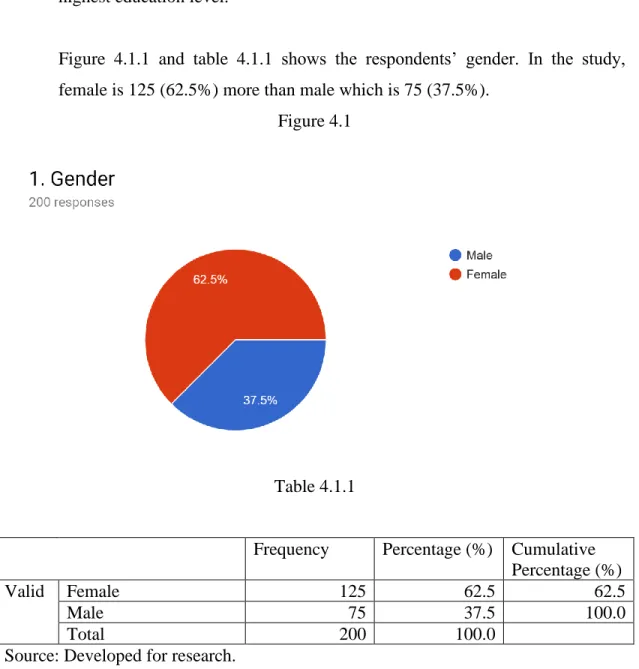
DISCUSSION, CONCLUSION AND IMPLICATIONS
Discussion of Major Findings ............................................................. 69-70
- Halal Awareness
- Islamic Brand
- Product Knowledge
- Attitude and Halal Awareness
- Attitude and Islamic Brand
- Attitude and Product Knowledge
There is a significant mediating effect of attitude on the relationship between halal awareness and purchase intention of imported halal food among Muslim consumers in Malaysia. Among Muslim consumers in Malaysia, there is a significant mediating effect of attitude on the relationship between Islamic branding and purchase intention towards imported Halal food. There is a mediating effect of attitude on the relationship between product knowledge and purchase intention towards imported Halal food among Muslim consumers in Malaysia.
Based on multiple regression analysis, the result shows that there is a positive significant relationship between attitude and purchase intention towards imported Halal food among Muslim consumers in Malaysia. Based on multiple regression analysis, the result shows that there is a positive significant relationship between Halal awareness and purchase intention of imported Halal food among Muslim consumers in Malaysia. Based on multiple regression analysis, the result shows that there is a negative significant relationship between Islamic branding and purchase intention for imported Halal food among Muslim consumers in Malaysia.
H5: There is a significant mediating effect of attitude on the relationship between halal awareness and purchase intention for imported halal food among Muslim consumers in Malaysia. Based on the sobel test, the result indicates that there is a mediating effect of attitude on the relationship between halal awareness and purchasing intention for imported halal food among Muslim consumers in Malaysia. H6: There is a significant mediating effect of attitude on the relationship between Islamic brand and purchase intention for imported halal food among Muslim consumers in Malaysia.
Based on the Sobel test, the result indicates that there is a negative mediating effect of attitude on the relationship between Islamic brand and purchase intention towards imported halal food among Muslim consumers in Malaysia. H7 :There is a mediating effect of attitude on the relationship between product knowledge and purchase intention towards imported halal food among Muslim consumers in Malaysia. Based on the sobel test, the result indicates that there is a negative mediating effect of attitude on the relationship between Islamic brand and purchase intention towards imported halal food among Muslim consumers in Malaysia.

Implication of Study
